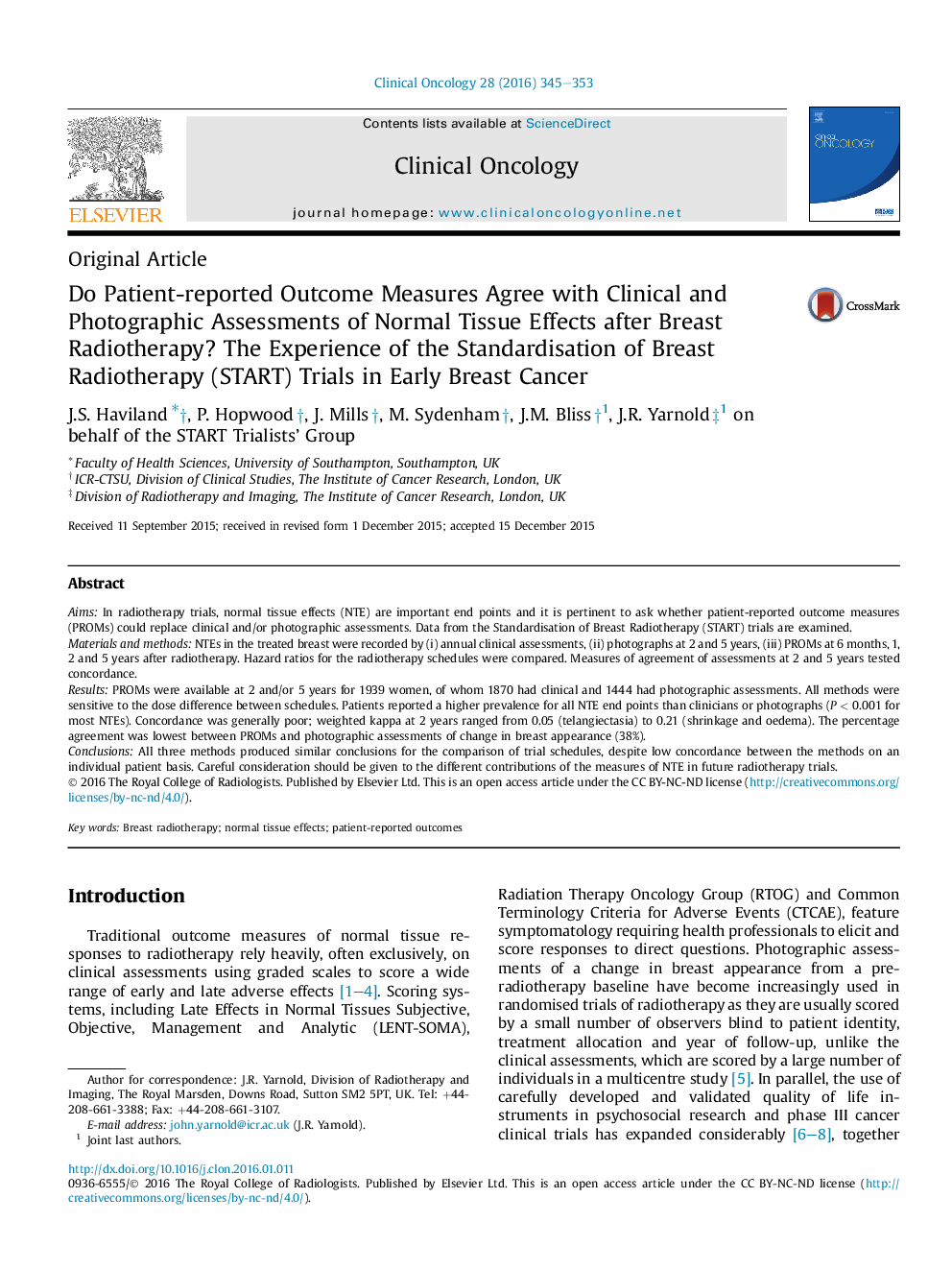| Article ID | Journal | Published Year | Pages | File Type |
|---|---|---|---|---|
| 5698156 | Clinical Oncology | 2016 | 9 Pages |
AimsIn radiotherapy trials, normal tissue effects (NTE) are important end points and it is pertinent to ask whether patient-reported outcome measures (PROMs) could replace clinical and/or photographic assessments. Data from the Standardisation of Breast Radiotherapy (START) trials are examined.Materials and methodsNTEs in the treated breast were recorded by (i) annual clinical assessments, (ii) photographs at 2 and 5 years, (iii) PROMs at 6 months, 1, 2 and 5 years after radiotherapy. Hazard ratios for the radiotherapy schedules were compared. Measures of agreement of assessments at 2 and 5 years tested concordance.ResultsPROMs were available at 2 and/or 5 years for 1939 women, of whom 1870 had clinical and 1444 had photographic assessments. All methods were sensitive to the dose difference between schedules. Patients reported a higher prevalence for all NTE end points than clinicians or photographs (PÂ <Â 0.001 for most NTEs). Concordance was generally poor; weighted kappa at 2 years ranged from 0.05 (telangiectasia) to 0.21 (shrinkage and oedema). The percentage agreement was lowest between PROMs and photographic assessments of change in breast appearance (38%).ConclusionsAll three methods produced similar conclusions for the comparison of trial schedules, despite low concordance between the methods on an individual patient basis. Careful consideration should be given to the different contributions of the measures of NTE in future radiotherapy trials.
